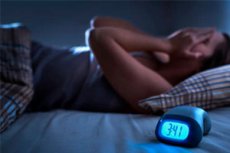New publications
Poor sleep in all its forms increases the risk of many diseases and deaths
Last reviewed: 03.08.2025

All iLive content is medically reviewed or fact checked to ensure as much factual accuracy as possible.
We have strict sourcing guidelines and only link to reputable media sites, academic research institutions and, whenever possible, medically peer reviewed studies. Note that the numbers in parentheses ([1], [2], etc.) are clickable links to these studies.
If you feel that any of our content is inaccurate, out-of-date, or otherwise questionable, please select it and press Ctrl + Enter.

In a new study published in the journal Nature Communications, scientists have developed an integrated sleep quality measure, the Unfavorable Sleep Profile (USP), which combines five key aspects of sleep: time of sleep onset, sleep efficiency, sleep duration, rhythmicity (sleep consistency relative to the circadian rhythm), and regularity (sequence over time).
Data and research methods
- The analysis used data from accelerometers – devices that measure movement and indirectly record sleep phases – from more than 85,000 UK Biobank participants.
- USP was defined as the sum of adverse characteristics across all five sleep components.
- A phenotype-wide association analysis (PheWAS) was conducted using more than 500 disease diagnoses.
- The analysis took into account age, gender, socioeconomic status, body mass index, smoking and other factors.
- A genetic analysis (GWAS) was conducted to search for USP-associated variations in the genome.
Key Results
- 18.9% of participants had a USP, that is, a combination of unfavorable sleep characteristics across all five domains.
- The presence of USP was associated with an increased risk of 76 different diseases, including:
- Cardiovascular diseases: heart failure, atrial fibrillation, hypertension.
- Metabolic disorders: diabetes mellitus type 2.
- Respiratory diseases: chronic bronchitis, renal failure.
- Mental disorders: migraine, depression, movement disorders.
- Others: anemia, electrolyte disturbances, low vision, limb injuries, respiratory distress.
- USP was also associated with an increased risk of all-cause mortality (hazard ratio 1.32) and a particularly increased risk of cardiovascular death (hazard ratio 1.55).
Genetic discoveries
- GWAS revealed significant associations of USP with genes previously linked to sleep and the nervous system:
- MEIS1 is a gene known from studies of restless legs syndrome.
- TTC1 is a cell regulation-associated gene and a new candidate sleep regulator.
- Potential link to regulatory regions of the CDK8 gene, which has not previously been linked to sleep physiology.
- Genetic associations were confirmed in an independent sample from the Multi-Ethnic Study of Atherosclerosis (MESA).
Influence of environmental factors and lifestyle
- USP was more common in people with low socioeconomic status, smokers, obesity, and alcohol abuse.
- These factors exacerbate sleep disturbances and likely increase the risk of developing related diseases.
Social significance and prospects
- Eliminating or improving USPs could potentially prevent up to 12.3% of cases of poor sleep-related disorders.
- The reduction in mortality due to improved sleep could amount to up to 5.7% in the general population and almost 9.3% of cardiovascular disease mortality.
- The results highlight the need to assess sleep holistically, rather than just using individual parameters.
- The use of objective accelerometer data enhances the accuracy of assessment and may aid in the development of individualized sleep improvement and disease prevention programs.
Summary
This study advances our understanding of the role of sleep as a complex, multidimensional phenomenon that impacts a wide range of chronic diseases and lifespan. The integration of sleep, genetics, and sociodemographic data opens new possibilities for prevention, early diagnosis, and personalized medicine.
